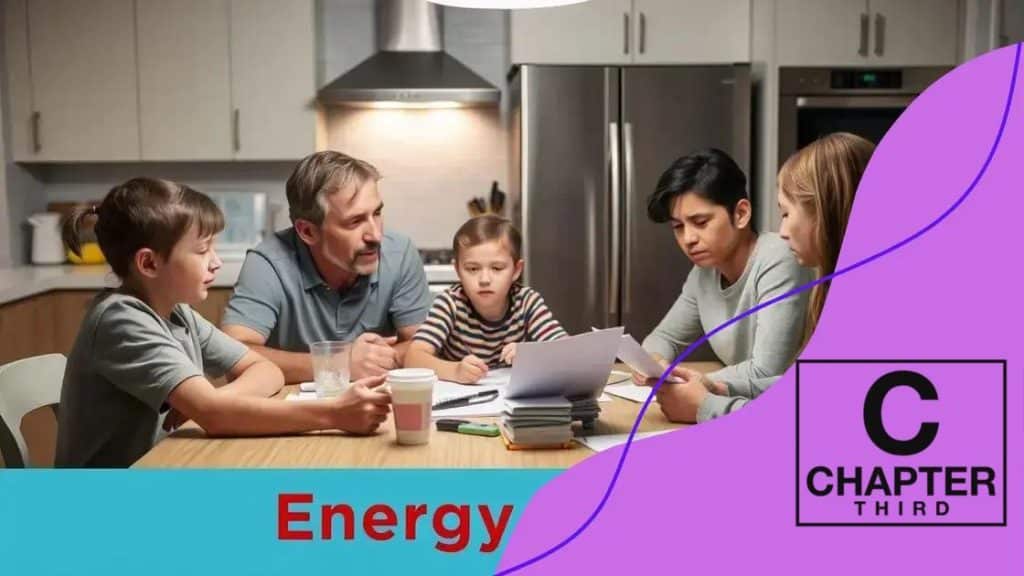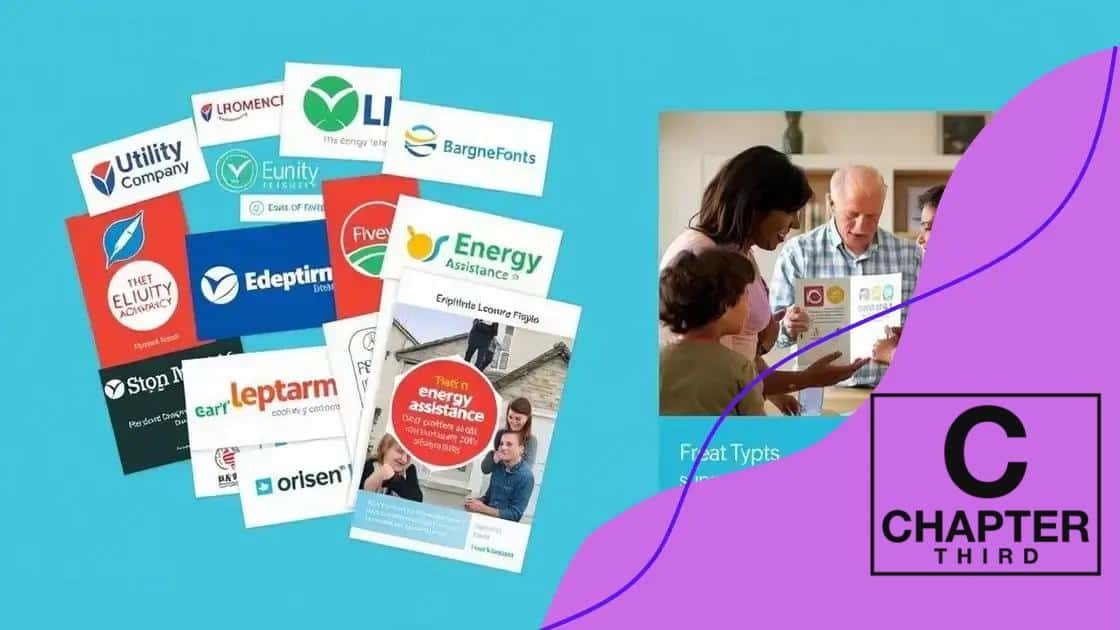Energy assistance expanded amid rising costs

Energy assistance programs provide financial support to low-income households for managing their heating and cooling costs, offering various forms of aid such as LIHEAP and local utility discounts to alleviate financial burdens.
Energy assistance expanded amid rising costs is becoming a crucial lifeline for many families facing financial challenges. As energy bills continue to rise, it’s vital to explore available support options and ensure you’re not missing out. Have you checked your eligibility yet?
Understanding energy assistance programs
Understanding energy assistance programs is essential for anyone struggling with rising energy costs. These programs are designed to help eligible households manage their energy bills, making it easier to keep the lights on and homes warm. By exploring what these programs offer, you can find the support you need.
What Are Energy Assistance Programs?
Energy assistance programs provide financial aid to low-income families to help them pay for heating and cooling costs. There are various types of programs at the federal, state, and local levels, each with its specific criteria and benefits.
Types of Energy Assistance Programs
- Federal programs like LIHEAP (Low Income Home Energy Assistance Program).
- State-specific assistance options tailored to local needs.
- Utility company programs that offer discounts or budget billing plans.
- Nonprofit organizations providing emergency funds and energy-saving resources.
Each program has different coverage levels, so it’s crucial to understand what is available in your area. Most programs aim not only to provide immediate help but also to offer long-term solutions to energy affordability.
Eligibility for these programs typically depends on your household income and size. Generally, households earning below a certain percentage of the federal poverty level may qualify. However, it’s essential to check the specific requirements for your location as they can vary significantly.
How to Apply
The application process for energy assistance can be straightforward. Usually, you will need to fill out an application form, provide proof of income, and sometimes your energy bills. Application forms are often available online or at local government offices.
Additionally, many states have online portals where you can check your eligibility or apply directly. Having your documents ready can streamline the process.
Who qualifies for energy assistance?
Finding out who qualifies for energy assistance is crucial for many families experiencing financial difficulties. To access these programs, certain criteria must be met, which can vary by state and type of program. Generally, the focus is on income levels, household size, and specific needs.
Income Eligibility
Most energy assistance programs set income limits based on the federal poverty guidelines. Families earning below a designated amount, usually a percentage of the poverty line, may qualify. Understanding these limits can help you determine if you are eligible.
What About Household Size?
Household size plays a significant role in determining eligibility for energy assistance programs. The larger your family, the higher your income can be to still qualify. Each program evaluates household size differently, making it important to check the specific criteria of each.
Special Circumstances
- Senior citizens may have different eligibility criteria.
- People with disabilities can often receive additional assistance.
- Families with young children might qualify for extra benefits.
- Housing situation, such as owning a home versus renting, can affect eligibility.
Checking if you meet these additional criteria is essential. Remember, many programs also consider extenuating circumstances that can impact financial stability.
To apply for energy assistance, you usually need to provide documentation that supports your eligibility. This includes proof of income, identification, and sometimes proof of residency. Gathering these documents can make the application process smoother and faster, ensuring that you receive the help you need.
Types of energy assistance available

There are various types of energy assistance available to help families manage their energy costs. Understanding these options is vital for those struggling to pay their bills. Each program has unique benefits and eligibility criteria, making it essential to explore what fits your needs.
Federal Programs
At the federal level, the most prominent program is the Low Income Home Energy Assistance Program (LIHEAP). This program helps eligible households cover their heating and cooling costs, offering benefits that can be vital during peak seasons. LIHEAP provides a one-time benefit based on your energy costs and household income.
State and Local Programs
Most states have additional energy assistance programs tailored to local needs. These can include:
- Cash grants to help with energy bills.
- Weatherization assistance to improve energy efficiency in homes.
- Discounts on monthly bills or services for qualifying households.
- Emergency funds for unexpected energy-related expenses.
By researching local options, you may find programs that offer extra assistance beyond federal aid.
Utility Company Assistance
Another valuable resource is your local utility company. Many utilities have programs that provide:
- Budget billing plans to spread costs evenly throughout the year.
- Discounted rates for low-income customers.
- Programs that assist with energy-efficient upgrades to reduce future costs.
Contacting your utility provider can reveal what options are available and how you might qualify for their assistance.
Nonprofit organizations also play a significant role in helping those in need. With various resources and community support, they often provide grants and emergency assistance for energy bills. These organizations sometimes run campaigns to raise awareness about energy assistance programs, making it easier for families to access help.
How to apply for energy assistance programs
Applying for energy assistance programs can seem daunting, but understanding the process can help simplify things. Many programs aim to make assistance accessible to those who need it most. Knowing the steps involved will empower you to seek the help you deserve.
Gather Necessary Information
Before starting your application, collect your important information. You will typically need:
- Proof of income for all household members.
- Identification documents, such as a driver’s license or social security card.
- Energy bills or statements from your utility providers.
- Documentation showing your residence, like a rental agreement or mortgage statement.
Having these documents ready can speed up the application process significantly. Make sure everything is up-to-date for your best chance of approval.
Locate the Application Process
Next, find out how to apply for the specific program you’re interested in. Many programs allow applications:
- Online through a dedicated portal.
- By phone, where you can speak with an official.
- In-person at local government offices or nonprofit organizations.
Check the specific requirements for your state and local area, as processes can differ from one place to another.
Submit Your Application
After gathering information and finding the correct application method, fill out the forms carefully. Double-check your entries to avoid mistakes that could delay your request. Sometimes, interviews may be required for further verification, so be prepared to answer questions about your situation.
Follow Up
Once you submit your application, it’s important to follow up. You may receive a confirmation number or indication of how long the process will take. If you don’t hear back in the expected timeframe, don’t hesitate to reach out to verify your application status.
Lastly, be patient during this time. The evaluation process may take a few weeks, but staying informed can help you navigate any potential issues. Knowing how to apply and what to expect can make a significant difference in securing the assistance you need.
Tips for maximizing your energy assistance benefits
Maximizing your energy assistance benefits can greatly reduce your energy expenses, allowing you to channel funds towards other essential needs. Knowing how to effectively utilize the resources available can make all the difference in your household budget.
Understand Program Details
Each energy assistance program has its own terms and benefits. Read the guidelines carefully to know what you can get. Some programs might offer:
- One-time payments for energy bills.
- Comprehensive assessments for energy efficiency.
- Additional funding for specific utilities.
Being aware of what different programs cover can help you take full advantage of the available support.
Stay Organized
Keeping track of your energy bills, applications, and correspondence with energy assistance programs is crucial. Use a filing system or a digital organizer to manage paperwork efficiently. This organization can help you:
- Quickly respond to requests for information.
- Keep a record of received benefits.
- Understand your energy usage trends over time.
Staying organized can also help you identify if additional assistance is needed in the future.
Participate in Workshops and Programs
Many local organizations offer workshops on energy efficiency and cost-saving measures. Participating in these can provide valuable insights into how to lower energy usage in your home. Learning about:
- Energy-efficient appliances and their benefits.
- Simple ways to weatherproof your home.
- Behavioral changes that can reduce energy consumption.
These tips can enhance the benefits you receive from energy assistance programs.
Check for Additional Aid
Sometimes, energy assistance can be combined with other forms of aid. Look for local resources such as:
- Food banks that help with meals.
- Housing assistance that may lower rent or mortgage.
- Health programs that assist with medical costs.
Utilizing multiple resources can significantly improve your financial situation and allow for better management of your energy costs.
FAQ – Frequently Asked Questions about Energy Assistance Programs
Who qualifies for energy assistance programs?
Eligibility typically depends on your household income, size, and specific program criteria. Generally, low-income households are prioritized for assistance.
What types of energy assistance programs are available?
Common programs include federal options like LIHEAP, state-specific assistance, and utility company programs that offer discounts or budget billing.
How can I apply for energy assistance?
You can apply online, by phone, or in person, depending on the program. Ensure you have all necessary documents ready, including proof of income and identification.
What steps can I take to maximize my energy assistance benefits?
Stay organized with your documents, participate in local workshops on energy efficiency, and explore additional aid options that may help with overall costs.





